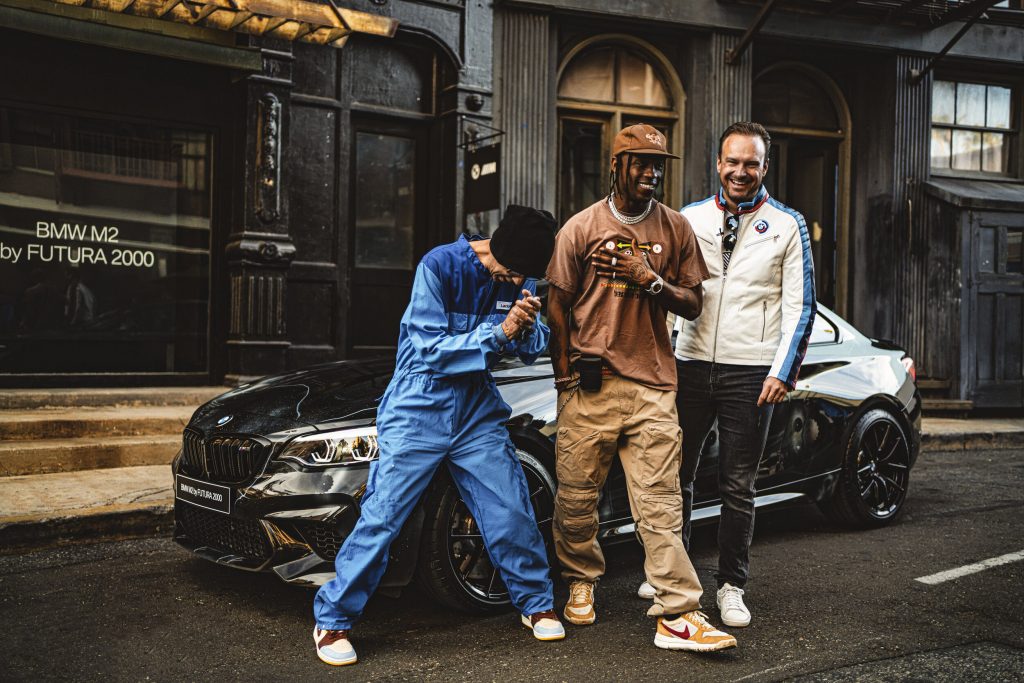Interview: FUTURA’s Decades of Kinetic Art + Meaningful Collaborations
From the “BREAK” train in the ’80s to today’s BMW M2, the artist’s work continues to move people

In 1980, a subway car sped through the Bronx completely covered in the work of Futura (the pseudonym of graffiti writer Lenny McGurr, formerly Futura 2000). It was another breakthrough for the artist—and the art form, as it was an exploration of unmatched proportions, all the while void of a traditional tag. Futura eschewed the medium’s font-forward styles for abstraction and, in doing so, helped to usher graffiti into the consciousness of the established art world. From his earliest tagging days in 1973 to this year’s Frieze Los Angeles art fair, Futura materializes grand visions with eagerness and authenticity.

Somewhere along the path of his ongoing four-plus decade career, Futura transitioned from tagging trains to exhibiting in art galleries. His process, one akin to an inspiration-driven flow state, hasn’t changed that much. “For me, a lot of things have to be in play for me to get there,” he tells us about the act of creation. “Everything has to be set up. Then, I determine what my limitations will be. As a spontaneous artist, I’ve got to control myself somewhat. I can’t just go off. Maybe it’s a little different when I am behind a computer or an iPad using Procreate, but I get in there and figure it out.”
I’ve got to control myself somewhat. I can’t just go off.
To speak the name Futura often conjures memories of his legendary scene and snapshots of his continued collaborations. “Lee Quiñones is one of my closest contemporaries from my era, of the ’80s, from our time with Keith Haring, Jean-Michel [Basquiat], RAMM:ΣLL:ZΣΣ, DONDI—Kenny Scharf is part of that school. I will be 65 this year. It’s rough as a number, but I look at myself and think, ‘You know, I’m lucky that I’ve lived a youthful life and I’ve been part of this movement that was started by kids and continued by subsequent generations.'” Famously, Futura showed with Basquiat and Haring. In 1981, he toured Europe with The Clash, painting live on stage.

His recent partnerships are no less impressive and include work with Nike, Virgil Abloh‘s Off-White, Hennessy and BMW M. “Markus Flasch, the CEO of BMW M [GmbH] is 39. Virgil is 40. I work with a lot of people that were born around 1980. In 1980, that was when my school was just surfacing. I was 25 in 1980. For me to be in the position that I am in now—where I look back at my lost angels—like Keith or Phase 2, one of the godfathers of the whole New York thing—it puts it all into context. I am very grateful to represent that story, that movement, and myself. I push through life as an individual not as some ambitious person without consideration for what’s happened to me,” he says.

For BMW M, Futura hand-painted three unique, exclusive and functional BMW M2 art cars—inside and out—one of which the brand unveiled at Frieze last week. He also designed a limited release BMW M2 Competition (in an edition of 500) that’s scheduled for public purchase in June 2020. It’s a return to moving canvases and represents a rare art piece intended to hit the road. The one-off revealed in LA carried artistically electric nuances that sizzle up close. Aesthetic details emerge with each continued glance. Futura signatures—drips and dazzling concentric shapes—abound.

“I will have to paint over 500 elements to meet the requirements,” Futura says of the consumer-facing model. “They’ll all be somewhat unique. That’s something we wanted to bring to the market. It’s really a Futura car.” The design of the one-offs and limited edition vehicles involved digging into what he himself desired. “I wanted it to be something I could get in and be in and recognize that it was an extension of me. But it was a place of subtlety—less loud and less, ‘Oh, look at my stuff.'”
When speaking of the future, Futura is hesitant to embrace the solidity of his tenure. “Seemingly, now, I am on a bit of a good plane,” he says. “I’ve arrived now. I have some stability. But there was a long time in my arc and timeline that I wasn’t secure. It was very much an up-and-down story.” He continues, “There were moments in my life where I was like, ‘OK, that’s it. I tried. I contributed. I did my thing and now I’ve got to look at something more secure.’ Fortunately, every time I tried to do that, other forces were at play to bring me back. I’ve been on this path all along. I have to believe that.”
“Perhaps, now, I’m thinking about legacy. What can I leave for a foundational episode?” he says, adding, “There’s so much more I feel like I could do as an artist, though. Maybe that’s another creative evolution.” Futura pioneered a medium—and a movement—through a radical approach to color and form. He isn’t close to being finished eliciting change in the arts.
Images by Enes Kucevic












